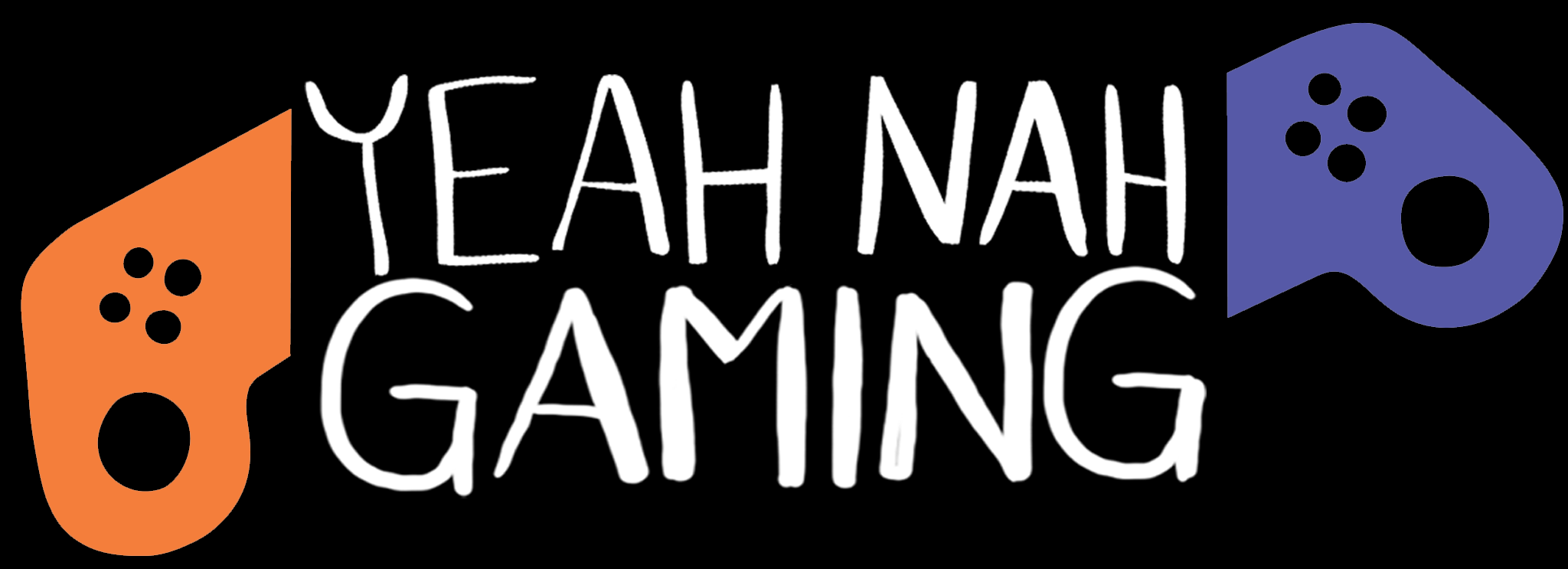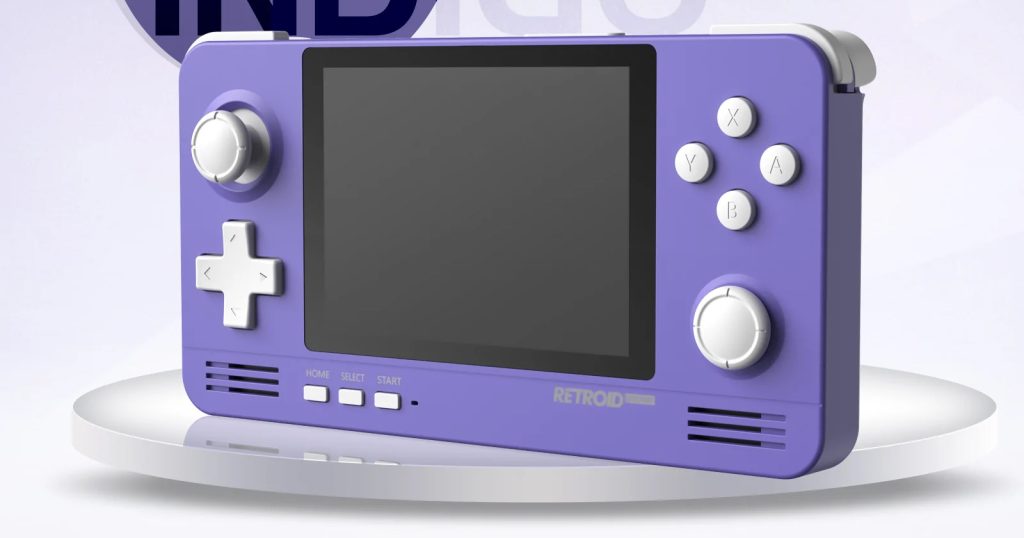It’s probably a little weird to be writing a review of the Retroid Pocket 2+ a few days out from the release of the Pocket 3, but here I am. Such is the price of indecision, I guess—I’ve been eyeing up retro handhelds for a while, but with so many to choose from, each with their own quirks, it’s been hard to actually commit and just buy one. I’m glad I finally did, and I’m glad the Pocket 2+ is the one I chose, because—while I don’t personally have any point of comparison—it’s pretty close to being exactly what I could want from a product like this. And for under NZD $200 shipped, no less.
Put simply, the Pocket 2+ is an Android device in the shell of a handheld game console, with a bunch of emulators for various retro consoles pre-installed. In that sense, it’s not doing anything you couldn’t otherwise do with a regular smartphone and a decent controller setup, but there’s a lot to be said for the convenience of a dedicated, fit-for-purpose handheld that you can easily carry with you. Faffing about with phone controllers is a nuisance, and it’s hard to just enjoy playing a game on a device that you also use for everything else. But a handy little Game Boy Advance-esque thing that you can just fire up and play? That’s the good stuff.
A familiar face

I say “Game Boy Advance-esque” because that’s a clear inspiration on the design of the Retroid Pocket 2+. It’s a similar shape and size, comes in a GBA-style colourway (among other options), and even has a little GBA-like sound effect when you turn it on. But where the GBA had two face buttons, two shoulder buttons, Start, Select, and a D-pad, the Pocket 2+ manages to squeeze in almost a full modern controller layout, with clickable analog sticks (L3 and R3) and pressure sensitivity on the triggers being the only things missing. Despite having so many buttons packed onto a comparatively small body, it’s comfortable to hold and play, even at length.
The buttons are conveniently placed and responsive, with just the right amount of travel and clicky feedback. They’re small-ish, especially if you’re more used to PlayStation or Xbox controllers, but not too small—they’re similar to the face buttons on a Switch Joy Con, in both size and feel. A Game Boy-style D-pad is particularly welcome, and feels a lot more reliable and precise than the D-pads you often find on modern controllers. It may seem a small thing, but a good D-pad can make a huge difference in 2D games (and, realistically, that’s mostly what you’ll be playing here). The left analog stick is also decent; perhaps not quite as precise as higher-end thumbsticks, but still more than adequate for the kind of stuff you’re going to be playing on the Pocket 2+.

The only major shortcoming is the right stick: Retroid has opted for lower-profile slide-pad here instead of a regular analog stick, which is just far less comfortable and reliable. It’s an odd decision: the only benefit, really, is the lower profile, and even that only really makes much difference in a clamshell like the 3DS. Here, where you’ve already got a regular analog stick protruding from the left side of the console’s face, there’s really no reason to go slide-pad on the other side. It just hamstrings the usefulness of that stick for no benefit.
On the other hand, the screen is fantastic. Colours and contrast are about as rich and deep as you’ll find without an OLED display, with sharp pixels that let 2D games in particular really pop. (I’ve played just about every iteration of Castlevania: Symphony of the Night, and it’s never looked as good as it does here.) 3D games look great, too; sure, a 480p display means there’s not a lot of room to run them at a higher resolution than usual, but that’s offset by the crispness of the screen and the comparatively small size. It’s a touchscreen, too, which comes in handy for extra input options and general use, although the unit I’ve got has a deadzone at the bottom of the screen, a few pixels high, making some inputs—the on-screen keyboard, notably—a bit fiddly. I’m not sure if that’s just mine, or if it’s a more widespread issue, so your mileage may vary.
There is also a micro HDMI-out and support for Bluetooth controllers, if you want to plug the Pocket 2+ into a TV and use it as a micro-console. That said, getting a 480p display to look passable on any modern TV is a challenge, and what you get in the convenience of a hybrid device (of sorts) you lose in picture quality. I tend to just stick to handheld play.

Let’s get it started
Initial setup can be as quick or as detailed as you want—it all depends on how familiar you are with the various emulators available for Android and how much fiddling with settings you want to do. If you want to just let the Pocket 2+ take care of things and install some presets, you can be up and running (with PS1 and older systems, at least) in a matter of minutes—so long as you can find the option to do this, which is a little tucked away and easy to miss. If you want to configure everything yourself, it’ll take a bit longer, depending on how familiar you are with RetroArch (or whatever other emulators you choose to use).
Newer consoles, like PlayStation 2 and GameCube, take a little bit more fiddling, and even then your results are going to vary a lot in terms of compatibility—more on that in a moment. But for PlayStation and anything over than that, setup is quick and mostly painless, notwithstanding the obscured placement of the menu option that makes it so, while advanced users can still go as deep into configuration as their favorite emulators allow.
The Retroid Pocket 2+ also makes it easy to set up and configure its built-in game launcher. Instead of going through different emulator menus (that are often not especially user-friendly), a launcher basically just lets you browse by console, view a list of games in the specified directory, and then launch them with whatever emulator you’ve set. Retroid’s one has a clean, simple interface with a quick, mostly automated setup: just pick a console, set the game directory, and pick your preferred emulator from a list. While it lacks some bells and whistles—like “recently played” and “favorites” sections—it’s a functional, neat design that’ll get you into your games as quickly as possible. And because it’s Android-based, if you’d prefer to use another, more fully-featured alternative like Dig or Reset Collection, you can. Regardless of preference, you can set whatever launcher you choose as the default display when you fire up the console, too, bypassing the usual Android app screen and getting straight into your game library.

The good stuff
The million dollar question with any retro handheld is: what systems can it handle, and how well? With PlayStation 1 and anything older than that, and handhelds up to GBA, Wonderswan, and even PSP, the experience is flawless. From Game Boy and NES to reliving my childhood with some PS1 favourites (I was a PlayStation kid), I haven’t played anything that didn’t look spot-on while running as smoothly as it should. Even the comparatively hard-to-emulate Dreamcast gets near flawless results on most games, and if you’re willing to spend a few bucks on DraSticDS, you can get great results with Nintendo DS, too.
Newer systems, like PlayStation 2 and GameCube, get a little trickier—in part because the Pocket 2+ isn’t exactly a powerhouse, and in part because of the complexity of emulating those systems in general. But even then, there’s a respectable—and growing—list of games that can be decently playable with the right configurations. The under-appreciated PS2 Shinobi reboot, running at near full speed on a console I can carry with me wherever I go? That’s an unexpected and welcome boon. It’s probably not going to be my default choice for playing PS2 games, but having a pocket option for a few old favorites that the Retroid can handle is always a plus.
And for everything older than PS2? The Retroid Pocket 2+ is now my go-to: a comfortable build, beautiful screen, handheld convenience, and flawless emulation make this a wonderful way to play your favourite classics—and maybe even discover some new ones.

Bonus round
While retro game emulation is obviously its main purpose, being Android based means you can do a lot more with the Retroid Pocket 2+, too. The obvious opportunity here is Android games that benefit from gamepad controls—the dedicated game console design makes it a natural fit, and aside from the most graphically demanding, it can generally handle most things just fine. I’ve had great results with the Android port of Symphony of the Night, Stardew Valley, the 3D remakes of Final Fantasy III and IV, and Chrono Trigger, and I’ve seen reports from others about a wide range of other games that work flawlessly.
In a similar vein, it’s a great way to play PlayStation and PC games remotely—with the obvious caveat that the low resolution and small screen can be an issue. That’ll rule out a lot of stuff designed with higher-res displays in mind, but for things like PS1, PS2, and PSP classics, or many of the abundant retro-styled indie games, you can get a great handheld experience. (For PlayStation, you won’t be able to use the official Remote Play app, since it doesn’t support third-party controllers. PSPlay is a third-party alternative that is absolutely worth the $10 or so it’ll cost you.)
The not a terrible secondary media device, either. Connect some decent headphones and you’ve got a handy music player, and it’s not bad for watching video in situations where you don’t necessarily want a big screen, like watching in bed late at night, or as a second screen you can prop up on your desk while working. You won’t be able to get Netflix on it, but Funimation, Acorn TV, and a few other streaming apps are compatible, and you can obviously play your own video files, too. These are all things that you can do with any smartphone, but it’s nice to have another option.

Those other uses are nice to have, but at the end of the day, the Retroid Pocket 2+ is a retro game device first and foremost. In that, it’s an excellent choice—awkward right stick notwithstanding, it’s an extremely reliable, comfortable way, and one that’s a lot more convenient than a smartphone + controller setup. You’re always going to get better emulation performance out of something more powerful, and the wave of Switch-style handheld PCs coming out means there are a lot of options for folks who want to spend hundreds (or thousands) of dollars on something that can do it all. But if you want a great retro handheld experience without breaking the bank, you can’t go wrong with the Pocket 2+.
Originally published on Shindig.
A great build, comfortable design, and excellent compatibility make the Retroid Pocket 2+ one of the best retro handhelds out there.

